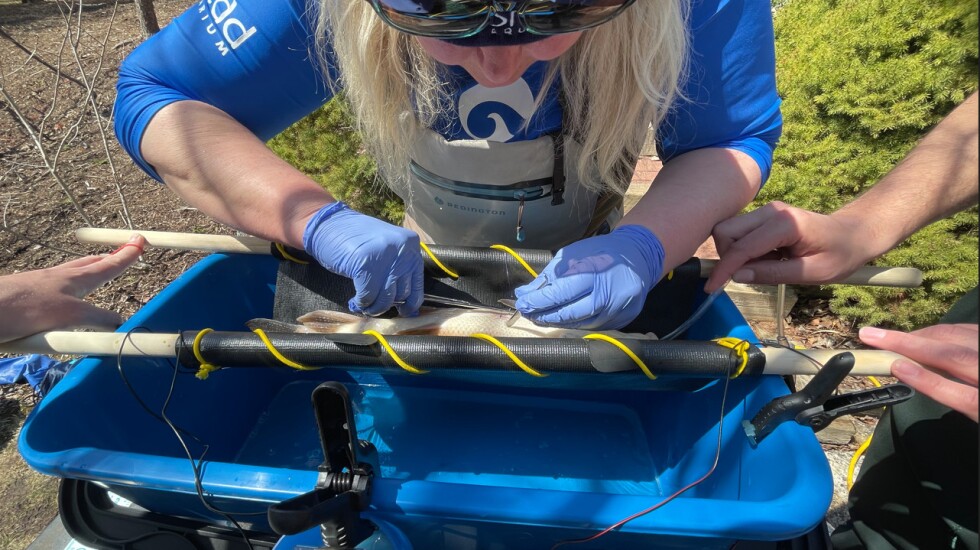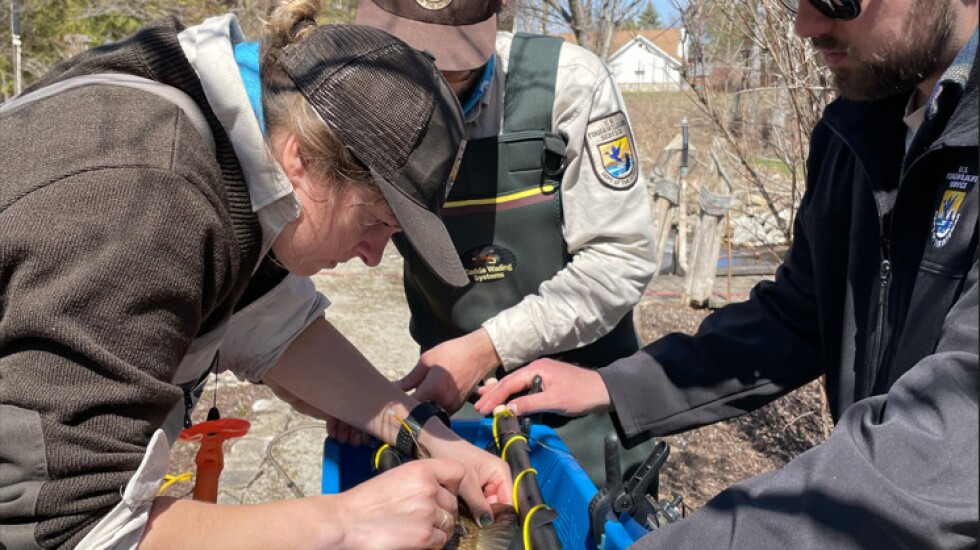
Going from studying bonefish in coastal waters to tracking migrating suckers in the Great Lakes seems like going from topwater fishing the Kishwaukee to trotlining the Big Muddy.
Not for Karen Murchie, director of freshwater research at Shedd Aquarium, who said, “They need a PR person and I am happy to fill that position.”
The Shedd is collaborating with multiple groups, especially the U.S. Fish and Wildlife Service, to use acoustic telemetry technology to study the movement of migratory suckers in the Great Lakes basin.
Suckers are the most abundant migratory species in the Great Lakes. The study has potential to provide a broad range of connected information.
“This study really highlights the amazing collaborative nature of the Great Lakes,” Murchie said. “Fish don’t recognize borders. It’s a really cool opportunity to get info on these fish.”
In April, 60 white suckers were netted in Wisconsin’s Door County and implanted with acoustic telemetry tags.

“Hopefully, we will expand to longnose suckers,” she said. “They are usually coming in at the same time. Some tributaries dominant more in one species than another.”
The transmitters have a battery life of three years. There’s also a loose tag on their back in case another agency is doing another survey and catch one. Anglers can call the phone number on the tag.
The pings from the transmitters are picked up by receivers of which there is a tremendous system in the Great Lakes Acoustic Telemetry Observation System (GLATOS). Researchers from many agencies studying multiple species use GLATOS.
Once a year the University of Wisconsin-Stevens Point and the USFWS download all the data and upload it to a large data base
The annual big download of data came in mid-July. Already there was 4,000 sucker pings. Even in a couple months, Murchie said, “We really had some cosmopolitan suckers and also has some homebodies. That’s petty typical.”
One, after leaving Sturgeon Bay, was found in Dyckesville in southern Green Bay; another as far north as Chambers Island.

Earlier studies showed the suckers return to the same waters. This study, among other things, will show where they go after spawning. Murchie said the data by other researchers studying northern pike and muskies could overlay with the sucker data to give “a whole new picture.”
She also received one live receiver from the Great Lakes Fishery Commission, which gives real time data.
“There is a lot we can learn through this technology,” she said. “I have a sucker TV right now. One of my tagged fish was picked up three minutes ago. It’s a really new asset.”
It’s the same sort of live receiver used to track tagged sharks for issuing beach warnings.
“Pretty darn cool to have suckers as a test case for a real time receiver,” Murchie said.
She will have a multitude of data to sort: including real-time water temperatures, creek temperatures, snow melt and varied impacts on the sucker run.
Suckers broadcast their eggs and milt over gravel substrata, unlike trout, which will make redds in the gravel. Another study found the increase in nutrients from the spawning run of suckers led to better algae and caddisfly growth.
Suckers help to move energy and nutrients around, or, as Murchie said, “Feeding in one area and pooping in another, that kind of movement of nutrients can be important.”
Suckers are an important food source for large predators such as pike and muskies, and, “Even panfish are waiting to nibble on the smorgasbord [of young] leaving the streams.”
Bigger stories will come.
“Only a teaser right now, but already what we are seeing is very cool,” Murchie said.








